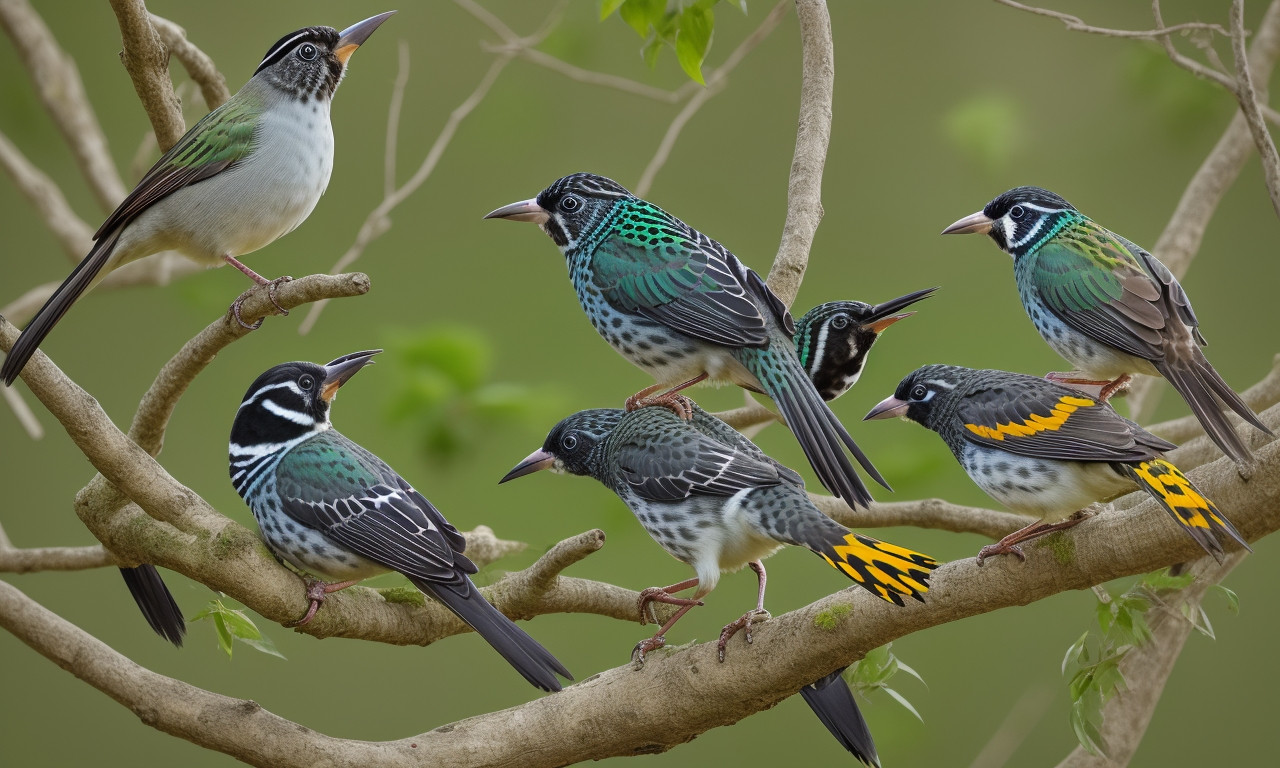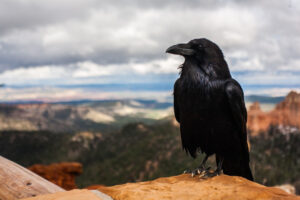The Natural State of Arkansas boasts a rich mosaic of habitats, from sprawling wetlands to dense woodlands, which form the perfect backdrop for an astonishing array of native birds. These feathered gems are not just a treat for avid birdwatchers but are woven into the ecological and cultural tapestry of Arkansas, adding vibrancy and life to its natural landscapes.
Nestled in the heart of the United States, Arkansas serves as a crucial intersection for numerous avian species, some staying year-round, while others grace the skies with their presence during seasonal migrations. For nature enthusiasts and casual observers alike, the opportunity to glimpse these captivating creatures is boundless. Whether you are meandering through the rugged Ozarks, voyaging along the mighty Mississippi River, or exploring the verdant Delta regions, be prepared to encounter the fluttering beauty of Arkansas’s native birdlife.
The Enchanting Songbirds of Arkansas
The Northern Cardinal: A Flash of Crimson
Sprinkling the landscape with their bold red plumage, Northern Cardinals are one of the most recognizable and beloved birds in Arkansas. Often associated with vitality and cheer, they can be found flitting around backyard feeders or serenading the dawn with their melodic tunes.
Related article; song birds of arkansas
- Scientific name: Cardinalis cardinalis
- Preferred habitat: Woodland edges, gardens, and shrublands
- Distinctive features: Male cardinals boast vivid red feathers, while females are a more subdued tan color with reddish accents.
The Eastern Bluebird: Sky-Hued Melancholy
With their gentle song and striking cyan plumage, Eastern Bluebirds carry the essence of a clear Arkansas sky on their backs. As harbingers of happiness, these birds symbolize serenity while they gracefully glide through open fields in search of sustenance.
Related article; water birds of arkansas
- Scientific name: Sialia sialis
- Preferred habitat: Open woodlands, fields, and orchards
- Distinctive features: Males have bright blue backs and rusty red throats, while females display paler blue tones with more subtle orange-brown coloring.
Habitat Conservation Efforts ‘The Benefactor of Bluebirds’
Arkansas’s conservation initiatives have played an instrumental role in bolstering Eastern Bluebird populations. By erecting nesting boxes and preserving natural habitats, these initiatives ensure that the future for these birds remains as bright and hopeful as their plumage.
Related article; backyard birds of arkansas
The Majestic Raptors of Arkansas
The Bald Eagle: America’s Icon
Undoubtedly the celebrity among Arkansas’s avian residents, the Bald Eagle commands respect and admiration. With its distinctive white head and tail juxtaposed against a dark brown body and wings, this raptor symbolizes freedom and strength, mirroring the spirit of the nation.
Related article; small birds of arkansas
- Scientific name: Haliaeetus leucocephalus
- Preferred habitat: Near large bodies of open water with abundant food supplies and large, old-growth trees for nesting
- Distinctive features: Aside from its iconic color pattern, the Bald Eagle’s imposing size and fierce yellow beak make it unmistakable.
The Red-tailed Hawk: The Dynamic Hunter
A common sight soaring over the fields of Arkansas, Red-tailed Hawks are known for their impressive hunting skills and characteristic screeching call. These hawks are masters of adaptation, thriving in varied environments across the state.
Related article; exotic birds in guatemala
- Scientific name: Buteo jamaicensis
- Preferred habitat: Open country, woodlands, prairies, and mountainous regions
- Distinctive features: Identified by their rounded wings and short, broad tails with a signature reddish hue.
The Role of Raptors in Ecosystem Balance
These raptors play a critical role in maintaining ecological equilibrium. By preying on small mammals, they assist in controlling populations and, in turn, contribute to the health and diversity of Arkansas’s ecosystems.
Related article; black birds in guatemala
The Waterfowl and Wetland Birds of Arkansas
The Wood Duck: Colorful Waterfowl Wonders
In the quiet coves of Arkansas’s rivers and lakes, one might catch sight of the elegant Wood Duck. With their iridescent plumage and distinctive markings, these ducks add an element of surprise to the aquatic tapestry of the state.
Related article; blue birds in guatemala
- Scientific name: Aix sponsa
- Preferred habitat: Freshwater swamps, marshes, and slow-moving streams
- Distinctive features: Males exhibit a rainbow of colors with intricate patterns, while females have more subtle but still striking brown and white plumage.
The Great Blue Heron: Stealthy Marsh Stalker
Standing tall on stilt-like legs, the Great Blue Heron embodies the calm yet potent energy of Arkansas’s wetlands. These birds are often seen poised patiently along the water’s edge, waiting to strike at unsuspecting fish passing by.
Related article; common birds in guatemala
- Scientific name: Ardea herodias
- Preferred habitat: Fresh and saltwater wetlands, from streams and rivers to ponds and marshes
- Distinctive features: Noted for their slate-gray bodies and dagger-like beaks, they have an imposing figure and can have wingspans of up to six feet.
Wetlands Preservation: A Vow to Waterfowl
The conservation of Arkansas’s wetlands is paramount for the survival of these waterfowl. Efforts to safeguard and restore these areas not only support bird populations but also enhance water quality and mitigate flooding, showcasing how human and avian interests can align in pursuit of environmental stewardship.
Seasonal Visitors and Migratory Marvels
The Snowy Egret: A Summer Spectacle
As the warm breezes of summer sweep through Arkansas, the Snowy Egret makes its seasonal appearance. With its delicate white feathers and slender frame, this egret brings an air of elegance to the marshy landscapes.
- Scientific name: Egretta thula
- Preferred habitat: Shallow water bodies such as ponds, marshes, and tidal flats
- Distinctive features: Recognized by their pure white plumage, black legs, and bright yellow feet which they use to stir up prey in the water.
The American Robin: The Harbinger of Spring
Marking the transition from winter to spring, the American Robin is celebrated for its cheerful song and vibrant orange breast. Migrating in large flocks, these birds signify the renewal and growth that comes with the warmer months of the year.
- Scientific name: Turdus migratorius
- Preferred habitat: Varied, from forests to urban gardens and parks
- Distinctive features: Alongside their iconic red-orange chest, robins have gray-brown bodies and a white ring around their eyes.
Migratory Pathways: The Aerial Highways Above Arkansas
Arkansas’s skies are etched with invisible pathways that myriad bird species traverse during their migratory journeys. The state’s position along the Mississippi Flyway makes it a critical stopover for birds seeking rest and nourishment, presenting a recurring spectacle for bird enthusiasts.
Unique Species and Conservation Champions
The Ivory-billed Woodpecker: The Ghost Bird of the South
Once roaming the big woods of Arkansas, the Ivory-billed Woodpecker’s presence has faded into legend, leaving behind a legacy intertwined with mystery and hope. Efforts to establish the bird’s status and conserve potential habitat continue, although sightings are rare and often contentious.
- Scientific name: Campephilus principalis
- Preferred habitat: Vast tracts of old-growth forest, particularly in swampy areas
- Distinctive features: Noted for its striking black and white markings and powerful bill, it was one of the largest woodpeckers in America.
The Painted Bunting: A Feathered Rainbow
The Painted Bunting is perhaps nature’s masterpiece, an avian artist’s palette come to life. These birds are a visual feast, boasting a spectrum of vivid colors that make them one of Arkansas’s most sought-after sightings.
- Scientific name: Passerina ciris
- Preferred habitat: Thick bushes in open country, as well as woodland edges
- Distinctive features: Males display an array of neon blue, green, yellow, and red feathers, while females don a more muted greenish-yellow.
Engaging in Bird Conservation: Actions for Arkansas
The protection of Arkansas’s native birds is a multifaceted mission, engaging diverse stakeholders from government agencies to local communities. By actively participating in habitat conservation, research efforts, and educational programs, Arkansans contribute to the vitality of their feathered friends. These actions ensure that countless generations can continue to marvel at the kaleidoscope of bird species that call the Natural State their home.
In conclusion, the native birds of Arkansas are so much more than a mere emblem of the state’s natural wealth; they are vibrant participants in the ecosystem, each species weaving a unique thread in the fabric of Arkansas’s environmental narrative. From the commanding flight of the Bald Eagle to the delicate brushstrokes of the Painted Bunting, these birds are a testament to the splendor and resiliency of nature’s creations. To encounter these feathered gems is to step into a world of wonder that reflects the pulsating life of Arkansas’s landscapes. Engaging with this avian majesty not only fills the heart with awe but also echoes the call to preserve and cherish the precious avian heritage of the Natural State.




